Olafur Eliasson | Nel tuo tempo
Firenze, Palazzo Strozzi
22 September 2022 - 22 January 2023
Conceived by Studio Olafur Eliasson
Curated by Arturo Galansino
Promoted and organised by Fondazione Palazzo Strozzi
Main Supporter Fondazione CR Firenze
NEL TUO TEMPO (IN YOUR TIME), OLAFUR ELIASSON’s largest exhibition in Italy to date, enlists the PALAZZO STROZZI’s Renaissance architecture in creating a powerful dramaturgy of immaterial artworks that address subjective perception and shared experience. The exhibition brings together new and older works that feature light, shadows, reflections, patterns, and intense colour, and includes a major new, site-specific installation in the courtyard and a digital artwork created using VR technology – presented to the public for the first time at Palazzo Strozzi.
The Fondazione Palazzo Strozzi is proud to announce Nel tuo tempo (In your time), a major exhibition by
Icelandic-Danish artist Olafur Eliasson on display throughout the gallery and courtyard space this autumn (opening 22 September 2022). One of the most original and visionary artists of our time, Eliasson has built up a multifaceted practice that spans installations, paintings, sculptures, photography, and film. Curated by Arturo Galansino, the exhibition comprises works that directly interact with the architecture and spaces of Palazzo Strozzi. New installations and older works subvert and refract perceptions, using the museum building itself as an instrument for producing the art. The Renaissance building becomes a dynamic body in which architecture, windows, ceilings, corners and walls are activated. Subtle interventions employing spotlights, screens, and colour filters draw attention to what is already there. From the structures behind the exhibition to the rituals of viewing it, Eliasson presents a multiplicity of possible narratives.
"Palazzo Strozzi returns to the contemporary with Olafur Eliasson: Nel tuo tempo, the first major exhibition ever held in Italy by Eliasson, one of the most original and visionary contemporary artists, continuing our series of exhibitions dedicated to the major artists of the present.” commented Arturo Galansino, Director General of the Fondazione Palazzo Strozzi and curator of the exhibition. “In 2015 Olafur visited the spaces of Palazzo Strozzi for the first time and was astonished by the Renaissance architecture, starting a long conversation between him and the fifteenth-century palace, a complex dialogue whose meaning is distilled into this exhibition.”
Eliasson commented: “Nel tuo tempo is a meeting-up of artworks, visitors, and the Palazzo Strozzi itself. This extraordinary Renaissance building has travelled through the centuries to greet us here, now, in the twenty-first century – not as a mere host for art but as a co-producer of the exhibition.
Yet it is not only the Palazzo Strozzi that has travelled across time. As visitors, you too have travelled – each mind-body different from the others. On individual journeys – with diverse backgrounds and experiences –we meet up in the here and now of the exhibition.”
Moving beyond the borders and physical limits of a space, Nel tuo tempo (In your time) calls into question the distinction between reality, perception and depiction.
THE EXHIBITION
COURTYARD
The exhibition begins with Under the weather (2022), a site-specific artwork for the public space of Palazzo Strozzi’s courtyard that comprises a large elliptical structure over 10 meters tall and suspended 8 meters above the ground. The installation conjures a moiré effect, which destabilises the viewers’ perception of Palazzo Strozzi’s strict orthogonal architecture, challenging its stable, unchanging historical structure. As visitors move around the courtyard, looking up at the work, the moiré pattern changes and shifts, interacting with everyone individually – it is the exchange between the viewer’s movement that activates the work, and their personal visual experience that completes the work. Only when seen from specific vantage points at either end of the courtyard does the ellipse appear circular.
PIANO NOBILE
Visitors move from the courtyard into the Palazzo, where they discover Eliasson’s direct dialogue with the architecture, which he interrogates through adding artificial lights, fleeting shadows, reflections, moiré effects and intense colours. Far from being simply a vessel or a backdrop, the building becomes a co-producer of the artworks, a creative tool in interacting with visitors’ perception.
In the first three rooms of Palazzo Strozzi’s Piano Nobile, Eliasson alters the Palazzo’s windows with installations that employ lights, colours and shadows. The artist invites us to perceive the architecture in a new way, destabilising our traditional understanding of it. Eliasson’s intervention in the rooms of the Palazzo is minimal, yet he manages to create strong, engaging atmospheres in which the central figure is the relationship between the exterior and interior space typical of Palazzo Strozzi and its large windows overlooking both the courtyard and the street. Lights reveal the irregularities of the glass: bubbles, scratches and dust make the materiality of the windows evident, encouraging visitors to become aware of the glass as a membrane separating the inside from the outside. This basic ‘mediating’ surface makes shelter and domesticity possible while also allowing visual communication, calling to mind the large Gothic and Renaissance windows found in churches throughout the city, in which light was considered a visible manifestation of the divine and a metaphor for spiritual elevation.
Two works in the exhibition echo the theme of the circle and the ellipse introduced in the courtyard: How do we live together (2019) is a large metal arc that dramatically bisects a room at a diagonal. The effect is a simple illusion that Eliasson has used in an array of past works, such as The weather project (2003) at Tate Modern: a half ring is affixed to a mirror on the ceiling so that room and ring are doubled. The half ring becomes whole, uniting real and virtual space. The second circular installation, Solar compression (2016), comprises a disc with mirrors on each side. Suspended in space, it turns steadily. The artwork emits a yellow light from between the two faces of the disc, flooding the room. The same yellow monofrequency light (in other words, light limited to the yellow wavelengths of the visible spectrum) saturates the installation Room for one colour (1997), reducing all colours to shades of grey and yellow, while heightening the viewers’ perception of details.
Beauty (1993) showcases a shimmering rainbow – in which beams of white light shining through a curtain of mist are broken into the colours of the visible spectrum. This apparition depends on the light projected from a precisely angled spotlight, as refracted and reflected by the water droplets, meeting the eye of the viewer. No two viewers see the same rainbow. Firefly double-polyhedron sphere experiment (2020) is emblematic of Eliasson’s work and testifies to his exploration of vision as an action of fragmentation and complexity of thought. The large polyhedron, made of pieces of green, orange, yellow, cyan and pink glass, spawned from the artist’s long-standing interest in geometry and light. In the same room, visitors can peer into Colour spectrum kaleidoscope (2003), which consists of dichromatic mirrors of various colours in a hexagonal kaleidoscope that is mounted on a wooden tripod. Eliasson says: “Kaleidoscopes play on the fact that what we see can easily be disorganised or reconfigured. They use a playful approach to show us different ways of looking at the world. In that sense we might say that a kaleidoscope represents a different point of view.”
STROZZINA
The exhibition continues in the spaces of the Strozzina with artworks that continue Eliasson’s focus on perception and his exploration into the moiré effect. Fivefold dodecahedron lamp (2006) consists of a dodecahedron that contains a highly reflective glass tetrahedron, while Eye see you (2006) creates a slight moiré effect according to the position and movement of the viewer. In addition, in the series City Plan (2018), seven maps of the city, traced back to geometric shapes on mirrors, reflect local newspapers replaced daily, to re-present considerations on time, a main theme of the exhibition. Presented to the public for the first time, the new artwork Your view matter (2022) uses VR technology to explore bodily perception in the digital space. Donning a special headset, visitors enter a digital world comprising a series of six virtual spaces. Five of these spaces each take the form of one of the Platonic solids – the tetrahedron, octahedron, icosahedron, dodecahedron, and cube – while the sixth takes us inside an immense sphere. Here, visitors can move about the spaces in virtual reality, accompanied by a pulsing minimalist soundtrack created by the artist. They can interact with the complex geometry from within by moving and looking in all directions in what is a deeply experiential interaction. The walls and ceilings – some of which are quite colourful, while others appear in stark black and white – scintillate with ever-changing moirés. In the tetrahedron – the first space that visitors encounter – the moiré arises as a result of the resolution limits of the VR headset, reflecting the headset’s own noise and drawing attention to the device. Since none of the moiré patterns are visible unless the viewer moves, the artwork only emerges in the visitors’ perceptual apparatuses through movement. Eliasson says “It’s a process of unlearning and relearning how vision works,involving not only vision but also the movement of your head, body, and brain.”
The exhibition, conceived by Studio Olafur Eliasson, is promoted and organised by the Fondazione Palazzo Strozzi. Main Supporter: Fondazione Palazzo Strozzi. Supporters: Comune di Firenze, Regione Toscana,Camera di Commercio di Firenze, Comitato dei Partner di Palazzo Strozzi and Intesa Sanpaolo.
The countryard installation Under the weather (2022), has been made possible thanks to the support of the Fondazione Hillary Merkus Recordati within the Palazzo Strozzi Future Art programme.
Thanks to the support of Maria Manetti Shrem and Città Metropolitana di Firenze.
The exhibition is produced in conjunction with the Castello di Rivoli Museo d’Arte Contemporanea which will be hosting a site-specific installation by the artist from 3rd November 2022.
BIOGRAPHY
Icelandic-Danish artist Olafur Eliasson (b. 1967) works with sculpture, painting, photography, film,
installation, and digital media. His art is driven by his interests in perception, movement, embodied
experience, and feelings of self and community. Not limited to the confines of the museum and gallery, his practice engages the public through architectural projects, interventions in civic space, arts education, policy-making, and climate action.Since 1997, his wide-ranging solo shows have appeared in major museums around the globe. He represented Denmark at the 50th Venice Biennale in 2003 and later that year installed The weather project, an enormous artificial sun shrouded by mist, in the Turbine Hall of Tate Modern, London, which was seen by more than two million people. In 2014, Contact was the opening exhibition of Foundation Louis Vuitton, Paris. Verklighetsmaskiner (Reality machines), at the Moderna Museet in Stockholm in 2015, became the museum’s most visited show by a living artist. In 2016, Eliasson created a series of interventions for the palace and gardens of Versailles and mounted two large-scale exhibitions: Nothingness is not nothing at all, at Long Museum, Shanghai, and The parliament of possibilities, at Leeum, Samsung Museum of Art, Seoul. Eliasson’s site-specific installation Reality projector opened at the Marciano Foundation, Los Angeles, in March 2018,
the same month as The unspeakable openness of things, his solo exhibition at Red Brick Art Museum, Beijing. In 2019, In real life, a wide-ranging survey exhibition of Eliasson’s artistic practice over the past twenty-five years, opened at Tate Modern, in London, before travelling to Guggenheim Bilbao in 2020. Olafur Eliasson: Symbiotic seeing opened at Kunsthaus Zürich in January 2020, and Sometimes the river is the bridge was shown at the Museum of Contemporary Art Tokyo from April to September 2020. For the exhibition Life, in 2021, Eliasson removed the glass facade of the Fondation Beyeler, in Basel, Switzerland, and conducted the bright green waters of the existing pond into the museum’s galleries, along with a host of aquatic plants and the odd duck or spider.
Located in Berlin, Studio Olafur Eliasson comprises a large team of craftsmen, architects, archivists,
researchers, administrators, cooks, art historians, and specialised technicians
///////////////////
Supporters
Comune di Firenze, Regione Toscana, Camera di Commercio di
Firenze, Intesa Sanpaolo, Comitato dei Partner di Palazzo Strozzi,
With the support of Fondazione Hillary Merkus Recordati, Maria Manetti Shrem, Città
Metropolitana di Firenze
Technical sponsors Trenitalia, laFeltrinelli, Ufficio Turismo Città Metropolitana di
Firenze, Unicoop Firenze, Rinascente, Mercato Centrale Firenze,
Destination Florence Convention & Visitors Bureau, Publiacqua
Press Office Fondazione Palazzo Strozzi:
Lavinia Rinaldi T. +39 338 5277132 l.rinaldi@palazzostrozzi.org
Sutton: Fiona Russell fiona@suttoncomms.com
Communication and Promotion Susanna Holm – Sigma CSC T. +39 055 2478436
susannaholm@cscsigma.it
Catalogue Marsilio Arte
Info and Reservations T. +39 055 2645155
prenotazioni@palazzostrozzi.org
Hours and admission www.palazzostrozzi.org


















































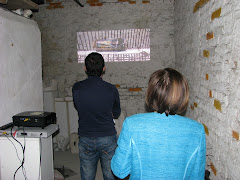














![exi[s]t>15 bulart](https://blogger.googleusercontent.com/img/b/R29vZ2xl/AVvXsEj67mt21mvAFC3VF_3QGzADB-5ZJJLBOlefD6Y8pi5z2e6HTMZztaHCi08vSOJ39mER-PcUmXUyHBnc-dMAq1t6MQe8reeNnIkyGKauFhd88y3NSvcsTLRlB1EdJQrefHryZQxK6-eDTvM/s240/buffet.jpg)
![exi[s]t>15 bulart](https://blogger.googleusercontent.com/img/b/R29vZ2xl/AVvXsEjuEe0w0gLW9nkOXAPGHqtkn89laZeWaQoLwvH2WVTEinKMw5RfqWwzcAkl1Ep27R6j1aYRF4BkiMX_juuZnGDNHyoHRCd65KHsXMg_Z_a3-tLG4OpCSHOlsj5hsPsh_htA6DEegu-Ubic/s240/P8250003.jpg)
![exi[s]t >15 bulart](https://blogger.googleusercontent.com/img/b/R29vZ2xl/AVvXsEg_O-oTzQ29LIVymZGSJUzpJCQYiu6VEztB6VkUPJmKb2VN5bRGpbURyj3-2M3Zz5JGtRjgwY_tr4qC-K21d5pKAzHZn9gYhbw2Vk7CPxb5unRin_828kpxYnzJbDa2Gkx6U1PFw2q1NDI/s150/P8250077.jpg)





















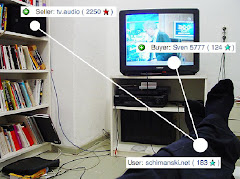














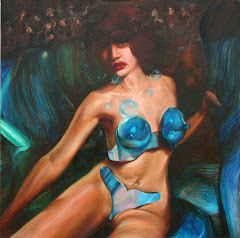





















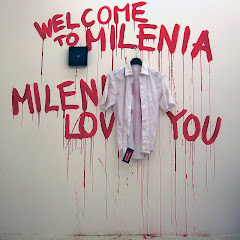

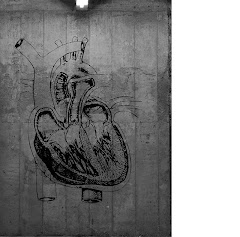







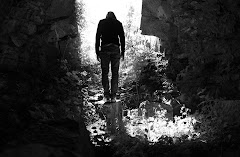



No comments:
Post a Comment